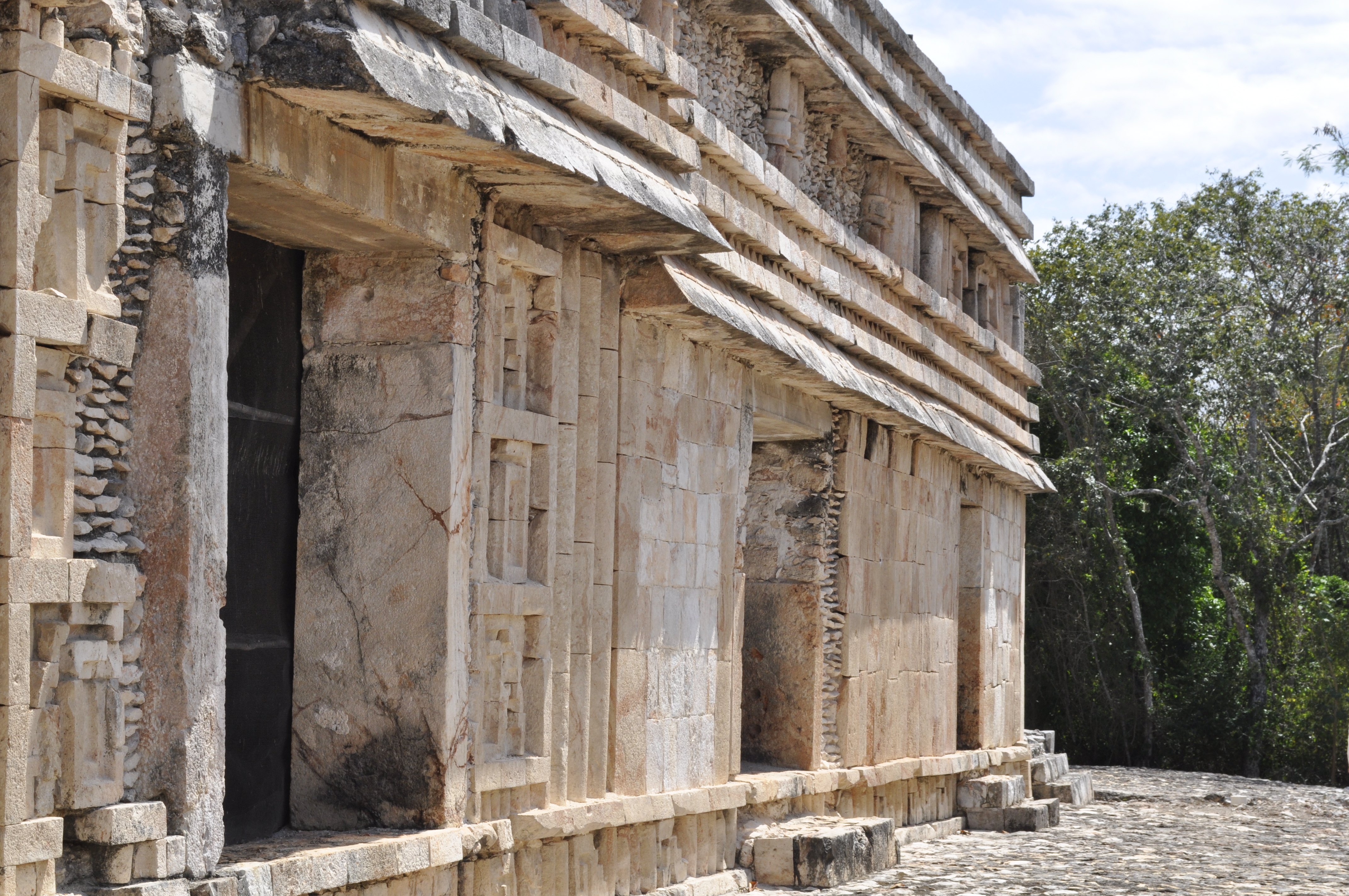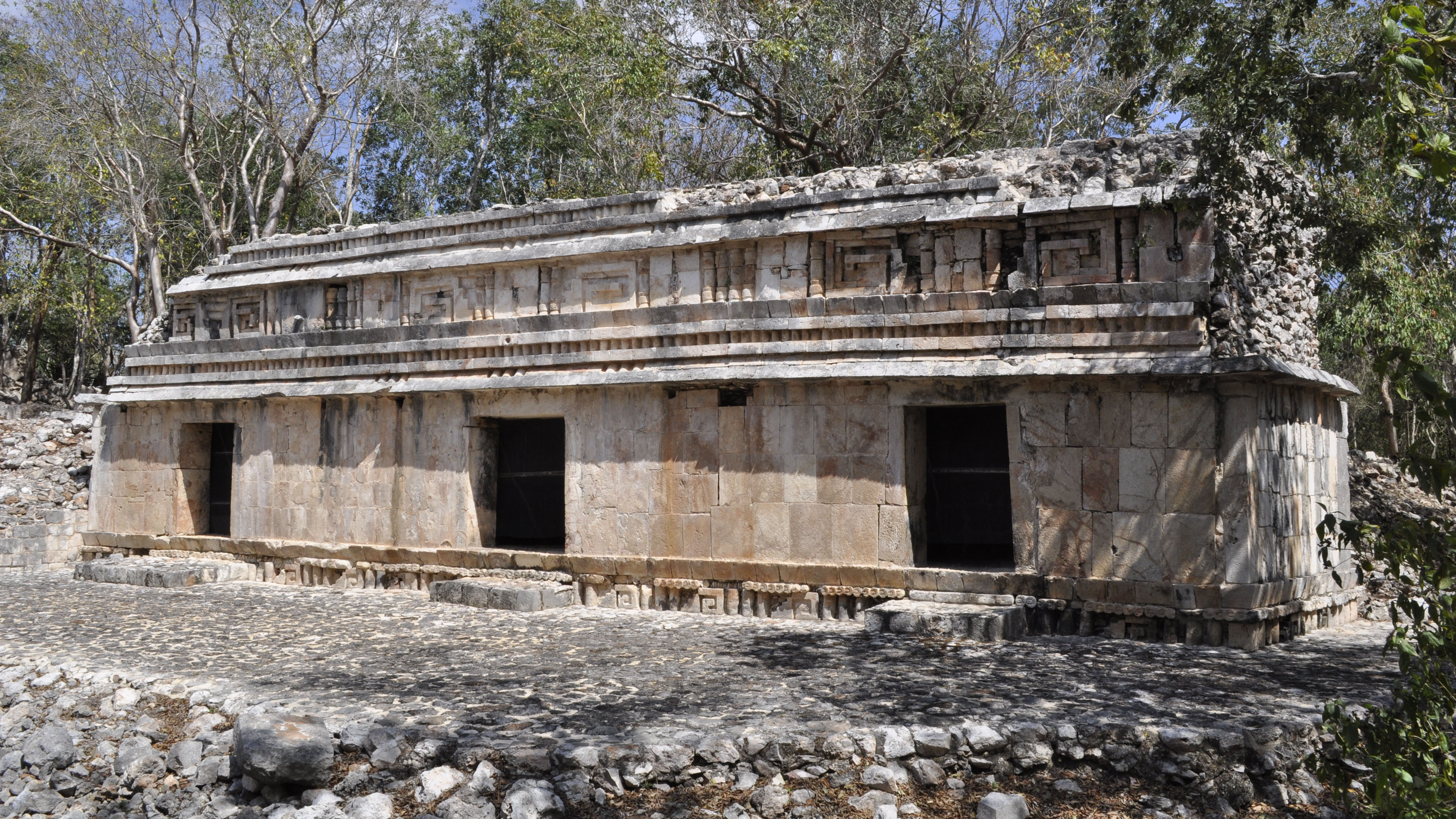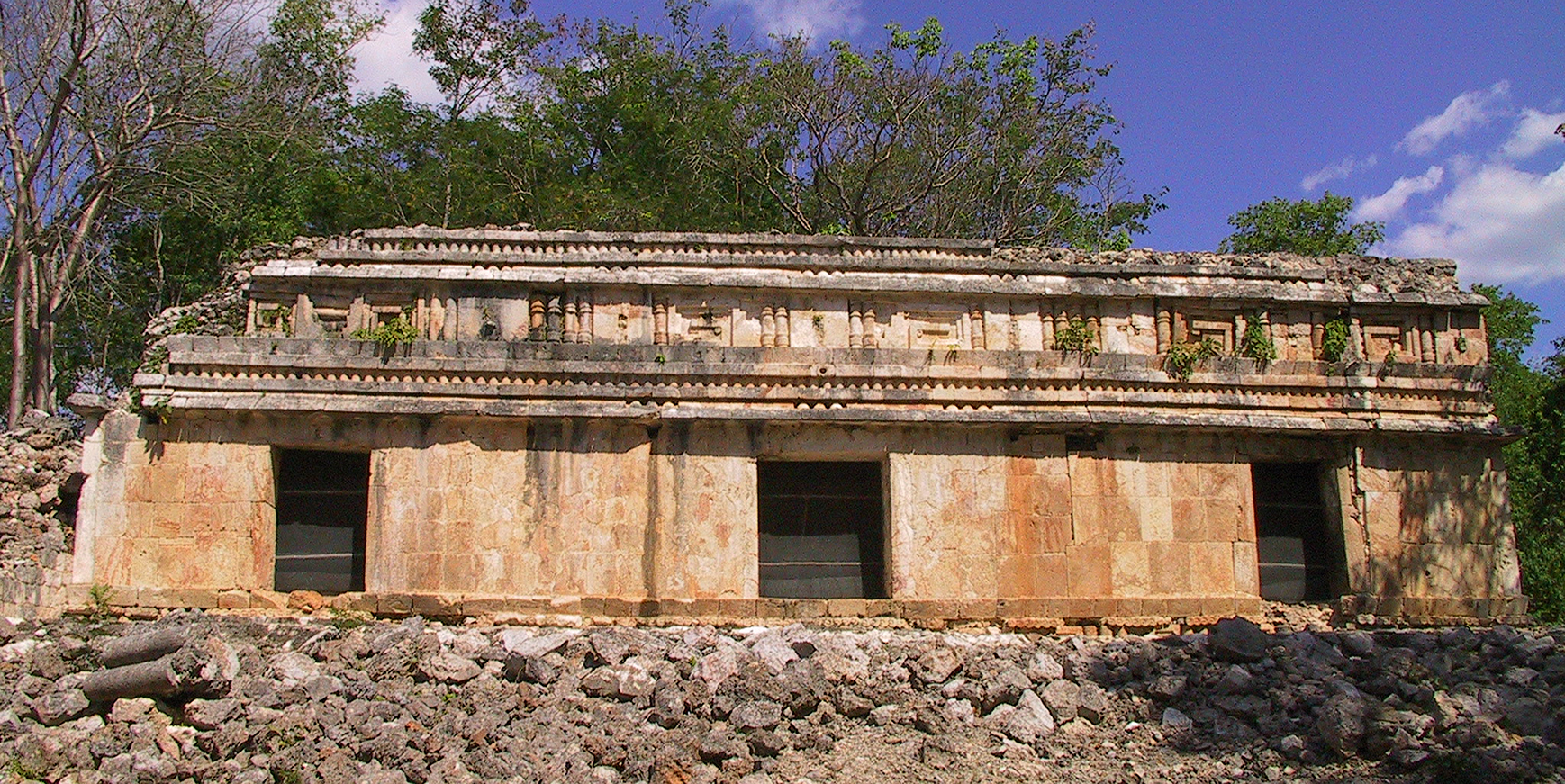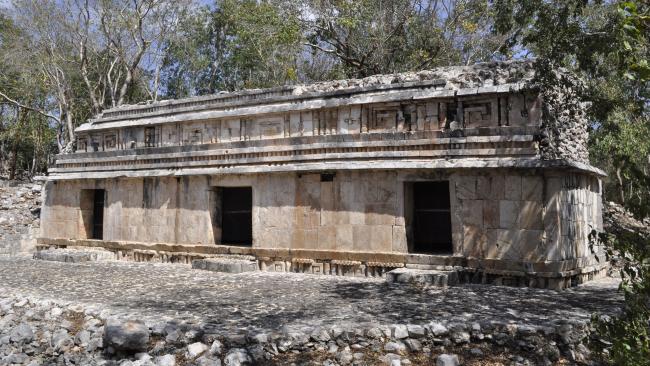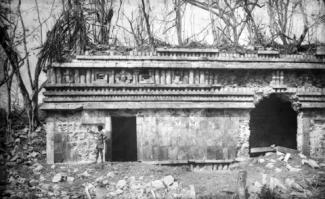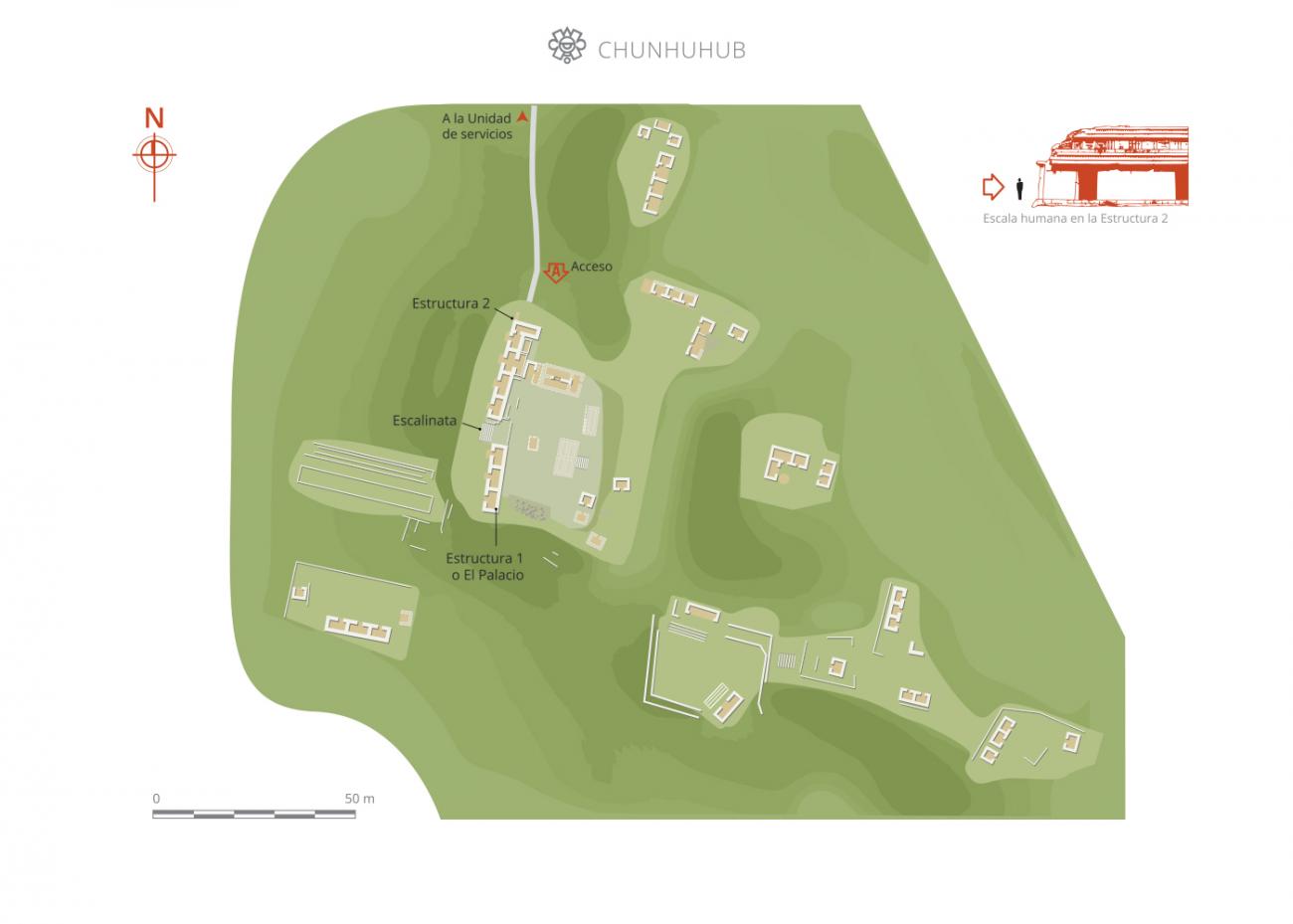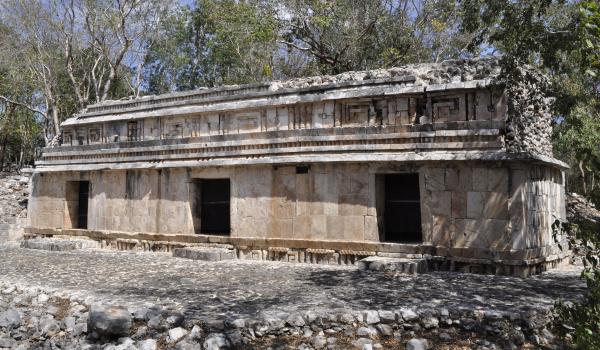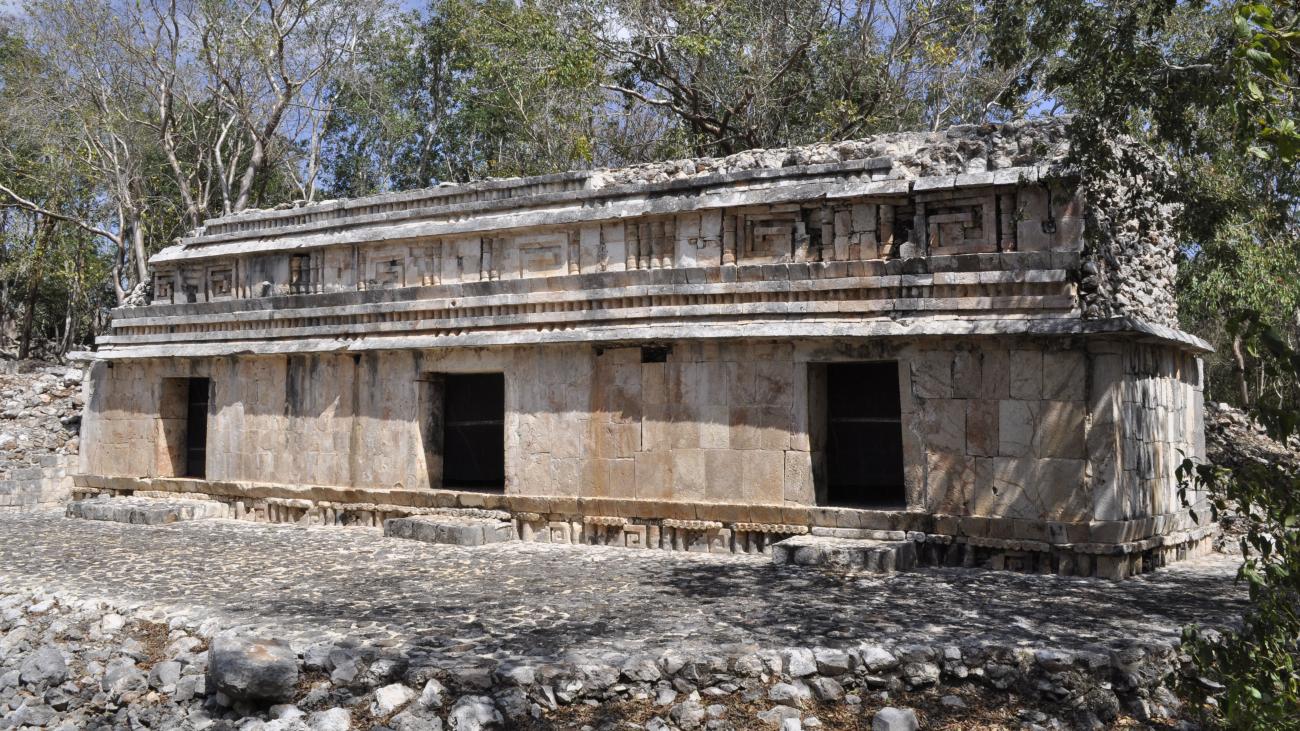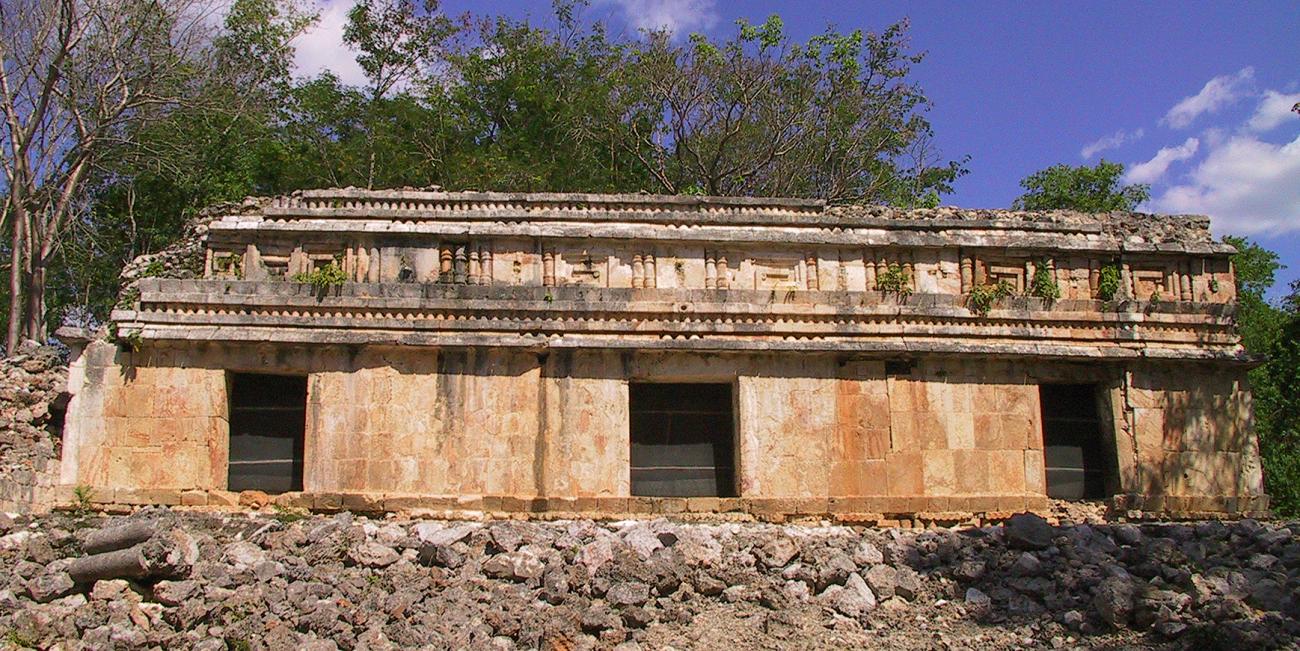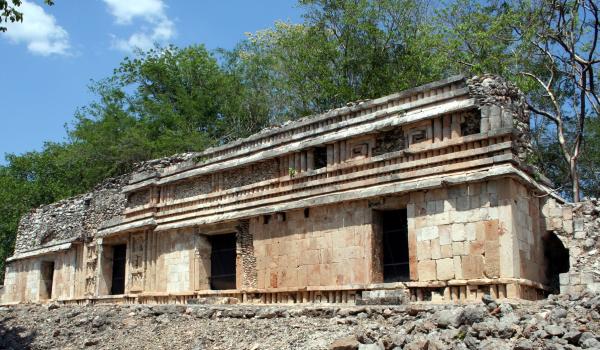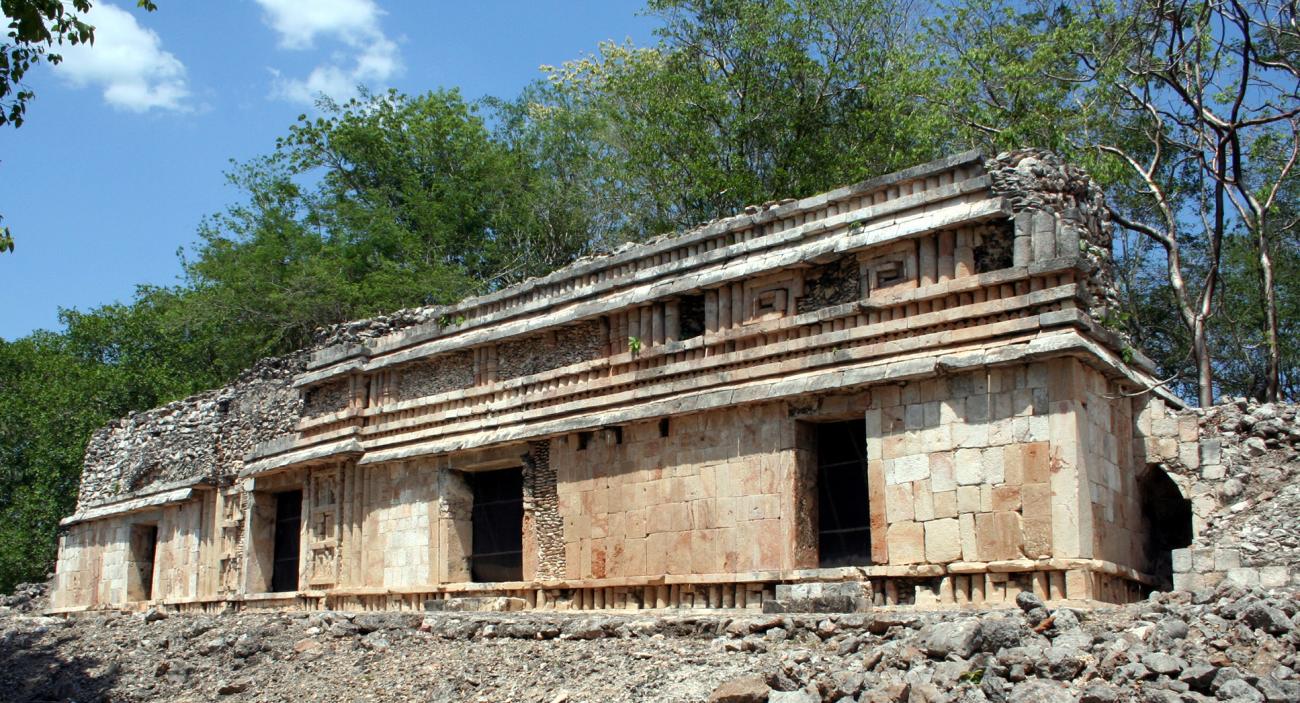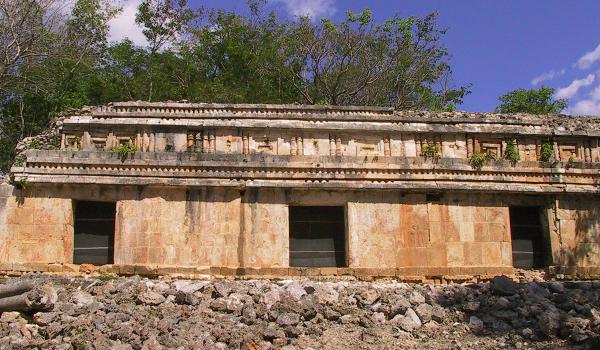The name of this archeological site means “trunk of the huhub trees" (Pinus caribaea) and, in common with many placenames from the peninsula, this refers to a natural element. The age of the toponym is uncertain, although another site with the same name exists in the central region of the state of Quintana Roo. The pre-Hispanic settlement of Chunhuhub was built on a series of low hills and plains of kankab (red earth), and its population began to grow in around the year 500 AD. The best-known remains date from the Late and Terminal Classic, in other words from the years 600-900-1000 AD.
Explorers John L. Stephens and Frederick Catherwood were the first to report the site in the mid-nineteenth century. They published their observations in 1841, and subsequently in 1843 produced a book, “Incidents of Travel in Yucatan,” with texts by Stephens and illustrations by Catherwood, who also drew many of the buildings visited in the Yucatan peninsula. Later, in 1887, Teobert Maler produced the first architectural and photographic records of Chunhuhub. In the 1930s, Harry Pollock documented the archeological site and several of its sculptures, which had been reused in the facades of houses in Xculoc, a town some three miles from the archeological site.
Luis Millet Cámara undertook the initial work to survey and restore the site of Chunhuhub in the 1980s. This was followed by a detailed study of the settlement’s layout, in a project coordinated by French archeologists Dominique Michelet and Pierre Becquelin. A few years later Renée Zapata worked on a project to restore the buildings now open to the public. In 2007, a protection area measuring just over 111 acres was created around Chunhuhub.
Chunhuhub offers numerous examples of Puuc architecture, particularly with buildings from the Junquillo and Mosaico periods (800-950 AD), noted for their use of small columns either made of single stones or with well-crafted joints, fret patterns and ashlars.




